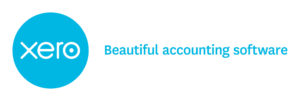Reform Of The ABN System
In Australia, there are currently around 7.7m ABNs with over 860,000 new ABNs issued in 2017-18. The ABN system was originally introduced in 2000 as a way to provide businesses with a unique identifier when dealing with the government and to support the introduction and administration of GST. Over the years, the ABN has become a de facto licence to do business and a key business credential used by other businesses and consumers in general.
Despite this expanded role, the ABN system has not changed substantially since 2000, ABNs can still be obtained easily and quickly using intentionally simple processes to facilitate small businesses. There is concern that this ease of application has led the ABN system to being used for nefarious purposes by operators in the black economy.
This view was affirmed by Black Economy Taskforce which found that ABNs were being used to provide a false sense of legitimacy to dodgy businesses with the potential to deceive consumers and other businesses.
As a way to tackle this issue, the government has proposed changes to the ABN system to ensure that it remains fit to support the expanded range of purposes it is used for. It is currently consulting on changes including adjusting ABN entitlement rules, imposing conditions on ABN holders, and introducing a renewal process including a renewal fee.
The potential changes to ABN entitlement rules stem from the Taskforce finding that not everyone obtaining an ABN is entitled. This includes: inappropriate use of ABNs in phoenixing schemes; individuals working as employees but applying for ABNs as independent contractors; individuals incorrectly obtaining ABNs to avoid “no ABN withholding”, and individuals fraudulently claiming GST input tax credits.
In response, the taskforce recommended that certain groups (such as apprentices and individuals on tourist visas, as well as workers in certain industries) be excluded from obtaining an ABN. Another avenue to restricting ABNs that is currently being developed by the ABR and ATO include an application experience based on the applicant’s risk profile which may involve stronger entitlement checks before an ABN can be obtained.
In terms of potentially imposing conditions on ABN holders, the Taskforce had initially recommended that ABN holders should only be allowed to continue to hold their ABN if they comply with government obligations (ie tax obligations). Which would allow businesses and individuals to better identify compliant businesses and act as a deterrent to those wanting to engage in black economy behaviour. However, the government emphasised that the design of the ABN cancellation process would need to be fair and transparent and only occur where the business had not taken appropriate steps of rectify issues.
Finally, the government is also consulting on the proposal to make ABNs subject to periodic renewal for a fee as recommended by the Taskforce. While a renewal process would not directly address those who use the ABN system to engage in fraudulent behaviour, it would indirectly address fraudulent behaviour by prompting ABN holders to have a closer engagement with the ABN system. The fee would also assist the ABR to better support data needs and discourage people from holding an ABN when they do not need one or are not entitled to one.



